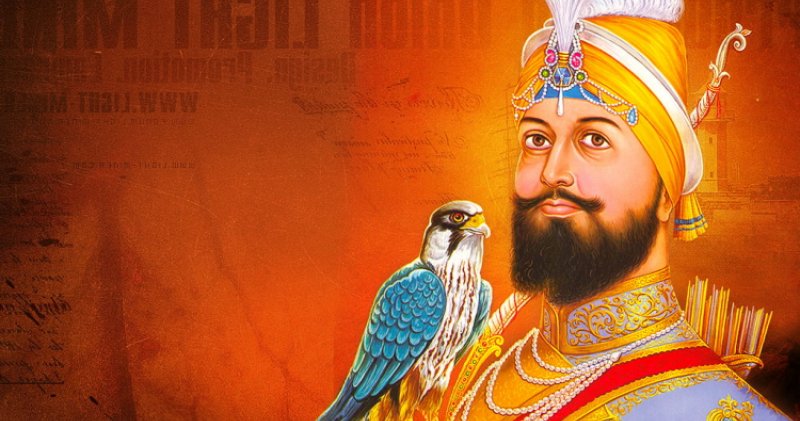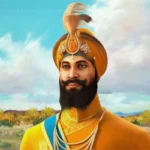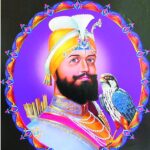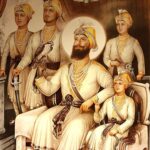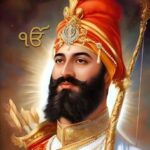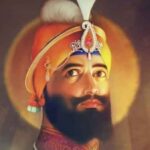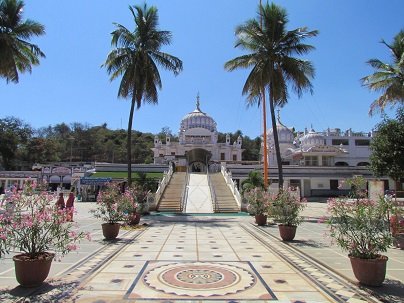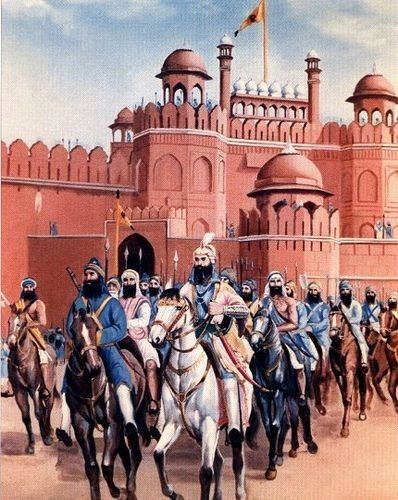“Soora So Pehchanneai, Jo Larai Dheen Kae Haeth, Purajaa Purajaa Kat Marai Kabahoo Na Chhaaddai Khet”
“He Alone Is Known As A Spiritual Warrior, Fighting for Righteousness, He May Be Divided In The Epistle But He Will Not Leave The Battlefield”
We need to be prepared to understand even the greatness of Guru Gobind Singh Sahib. The world has never seen a man, a divine messenger, a hero, a prophet, a poet, a great emperor like Guru Gobind Singh Ji. He is often revered as Sarbanes Dani (Gracious Giver, who sacrificed everything), Mard Agamra (Incomparable Man), Badshah-E-Darwesh (Ruler and Prophet), among others. Many historians have tried to reflect on her life and have concluded that no one in this world has ever lived a more fulfilling life than Gugu Gobind Singh Sahib. In a short time, he led the foundation of Panth who in times of great difficulty stood for justice and continued to serve and sacrifice their lives for the sake of humanity. The Khalsa Panth was opposed to all political power based on injustice, oppression, and exploitation.
Allah Yaar Khan, a Muslim poet, wrote of many couples of greatness and self-sacrifice made by Guru Gobind Singh Sahib.
“Ulfat Ke Yeh Jalwe, Kabhi Dekhe Nahi Humne, Haan Dekhna Ek Baat, Sunay Bhi Nahi Humne”
“I have never seen such unusual acts of love (about Guru Ji giving up everything he owns). What you can say by sight, I have never heard of them.”
There is no other example in this world when the Prophet-Sacrifice sacrificed his descendants for the sake of mankind. Guru Sahib fought more than 17 wars in his lifetime, against oppression, dictatorship but not a single war that was local or world power.
In 1666, Guru Gobind Sahib was born to Mata Gujri Ji in Patna Sahib, Bihar. It is said that at the birth of the radiant divine light, Pir Bikhan Shah, a Muslim Mystic living in Ambala, Punjab, led by this divine light began on his way to Patna Sahib. This is where Pir Bikhan Shah went to the Guru Gobind Sahib with two bowls of milk and water symbolizing Hindus and Muslims. Guru Sahib placed his hands on both vessels. The mystery bowed reverently and the world received the message that a prophet for all mankind had been born.
After his birth Guru sahib spent his childhood in Patna Sahib. At the age of nine, a group of Kashmiri Pandits led by Kirpa Ram visited his father, Guru Tegh Bahadhur Sahib seeking refuge and help in fighting the religious persecution and oppression of the Mughal Empire. How often do you see or hear a nine-year-old boy begging his father to sacrifice his life for mankind? Imagine the relationship between a son and his father. It was Guru Gobind Singh Ji who asked his father to defend the faith of the Kashmiri Pandits.
On the day when his father, the Ninth Gugu, Guru Tegh Bahadhur Sahib laid down his life in defense of the faith and freedom of the people, the tenth king, Guru Gobind Singh, announced that he would create a Panth (Community) to challenge the dictator. rulers, fight for the oppressed and stand for justice. He builds a kind of hero outside of the poor working class. These heroes were different. They were born out of love for Guru, they had a moral code, they were not created for revenge but Justice.
Guru Nanak Sahib founded Sikhism through plebeian work. A work in which the oppressed and the weak will become masters and kings one day – “Nanak Raaj Chaaleya, Sach Kot Sataani Neev De”. For more than 200 years each Sikh Guru carrying the divine light of Gugu Nanak gradually developed Panth until the day when Gugu Gobind Singh Sahib finally established him as Khalsa.
In 1699, in Vaisakhi Day, Guru Sahib founded the Khalsa Panth at Takht Sri Kesgarh Sahib, a blessed fortress of uncut hair. All races were united, women were treated equally as men, the poor and oppressed were blessed with Kingdom and Empire. Guru Sahib created heroes, scholars like him. The world had never seen such a center. Men were given the surname “Singhs” and women were given the surname “Kaurs”. It was the most unusual event in the history of the world. The revelation of Khalsa Guru Sahib gave women the opportunity to live freely in the chains of superstitious society. Sikh history has many instances where women can be seen leading men in wars. Mai Bhago, a brave Sikh warrior became inspired after the courage of 40 liberated Sikhs who had left Guru Gobind Singh Ji in the battle of Anandpur Sahib. He led them to the battle of Mukhtsar where all 40 Singhs were martyred. Now they were called “Challi Muktey” He later served as the bodyguard of Guru Gobind Singh Sahib.
Guru Gobind Sahib did not have Nirvair (Except for any differences) and Nirbhau (Hate). This can be seen from the historical example when Guru Sahib allowed Bhai Kanhaiya Ji to supply water and medicine to both enemies and allies on the battlefield of Anandpur Sahib. Guru was so humble and compassionate that his arrows had tips made of gold. This is so that the families of the men who were killed or injured will be cared for after death, or will pay for the healing.
Guru Gobind Singh Sahib sacrificed his beloved sons for his righteousness and humanity. The mind shifts to understand how children of such a young age had the courage, the courage to choose death and remain focused on their task of supporting the goals of Sikhi. The younger sons of Guru Gobind Singh Sahib, Sahibzaada Fateh Singh, and Sahibzaada Zorawar Singh were tortured and beaten alive in Sirhind, Punjab, and the two oldest sons died in the Battle of Chamkaur. It is the same war in which 40 Sikhs fought over an army of more than 10 lakhs.
While explaining the importance of the land of Chamkaur, Allah Yaar Khan Jogi wrote these lines of immortality in his historical narrative.
“Bas Ek Hii Hind Mein Tirth Hai Yatra Ke Liye, Katai Baap Ne Betey Jahan Khuda Ke Liye”
“There is only one place of worship in this part of the world where a father gives his sons for humanity.”
The world has never seen a Saint-Warrior like Guru Gobind Singh Sahib. He lived in Chardi Kala (High Spirits). After many days of the war in Chamkaur Sahib, when his eldest sons died in the faith, Guru Sahib finally reached the Jungle of Machivara.
Her family was separated, her sons sacrificed their lives, but still in this situation she longed to meet a loved one.
“Mitar Pyare Nu Haal Murida Da Kehna”
“My loved one should know my condition” – Guru Gobind Singh Sahib.
Apart from being a Saint-Warrior, Guru Sahib was a well-educated man. He was fluent in Persian, Arabic, and other languages. His writings reflect the message of unity and globalization.
“Manas Kii Jaat Sabhe Ek Hai Pehchan Bo”
Recognize the whole human race as one – Guru Gobind Singh Sahib.
Following the same ideas, today, Khalsa Aid, an organization that helps the needy is working in areas affected by war and natural disasters.
If you want to understand Guru Gobind Singh Sahib you cannot ignore the writings of Bhai Nand Lal Goya Ji. He was one of 52 poets in the court of Guru Gobind Singh Sahib. “Faiz-E-Noor” is part of Nand Lal Goya Ji’s famous writings. Through Faiz-E-Noor, Bhai Nand Lal Goya congratulates the 10th Guru:
“Haq Haq Agaa Gur Gobind Singh
Shah-E-Shehanshah Gur Gobind Singh
Baadshah Darvesh Gur Gobind Singh
Zumla Faiz-E-Noor Guru Gobind Singh “.
“Guru Gobind Singh Sahib knows the ways of God, He is the Sovereign and the Prophet”
The court of Guru Gobind Singh Sahib was one of a kind. It was an open court in which poets, warriors, scholars, men, and women from all walks of life, kings lived together.
